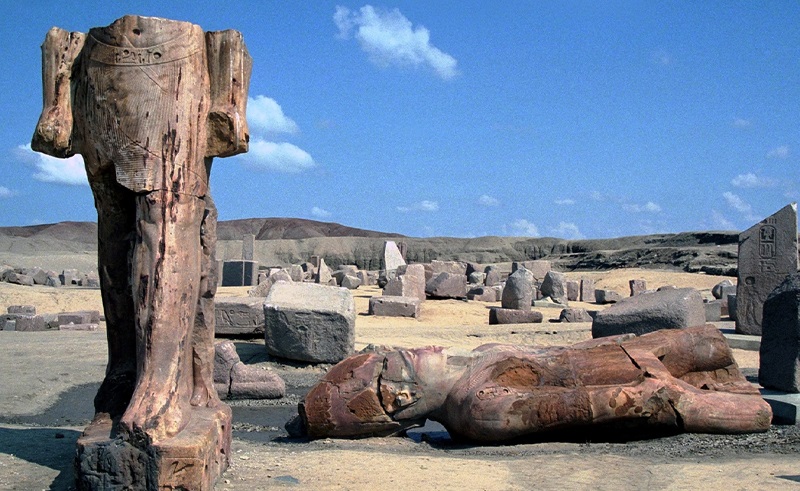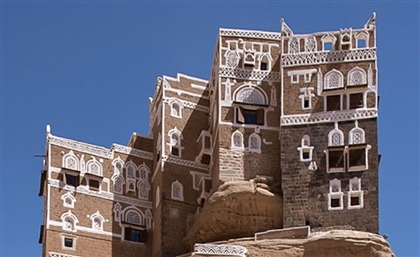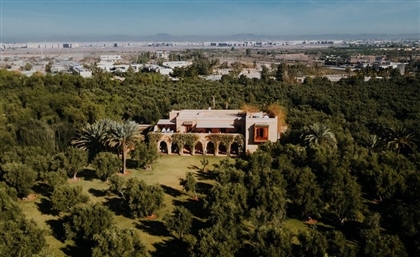Unravelling the Twisted History of Egypt’s Forgotten City of Tanis
The Egyptians called it Djanet, the Old Testament named it Zoan, the Arabs dubbed it San Al Hajjar, and it was even in Indiana Jones. But what do we really know about Tanis, Egypt’s lost capital?

Before Cairo, there was Tanis. If you embark on a three-hour drive north from the current capital of Egypt, 165 km along the Nile Delta, you should find the city of Tanis - Egypt’s lost capital.
Relatively unknown among Egypt’s wealth of historical sites, with royal tombs filled with treasures on par with Tutankhamun’s, you may recognise the name of the city from the Indiana Jones film ‘Raiders of the Lost Ark’. There Tania was portrayed as a city buried by a catastrophic ancient sandstorm and rediscovered by Nazis. In reality, the sandstorm never happened and Indiana Jones never battled Nazis on Egyptian soil. That said, the true tale of Tanis is also fit for the big screen.
Following the death of Ramses XI at the end of the 20th Dynasty, Semendes, the high priest of Amun took Lower Egypt and made Tanis its capital. After his days, several pharaohs conquered the throne. At one point in history, the rulers of Tanis were of Libyan descent, rather than scions of traditional Egyptian families. Over the ages it became shrouded in mystery and lost - people knew it existed, that it was there, just not where.
The first modernt map of the ancient site was drawn during Napoleon’s hostile takeover, and in 1939, Pierre Montet, a French archaeologist made a breakthrough discovery of its royal tombs, and they were - to the surprise of many - utterly untouched. Golden funeral masks, quartzite sarcophagi, silver coffins and alabaster jars were all part of a dazzling array that bears witness, after thousands of years, to the power and wealth of Tanis’ rulers.
Montet’s discovery was extraordinary, but its timing couldn’t have been worse as it was almost simultaneous with the eruption of World War II. Egyptologists noted that had it not been for the war, the royal burials of Tanis would have been more well known than the tomb of King Tut. Aside from the plunder-contested tombs, Tanis also hosts temples of Amun and Horus. In 2010, space archaeologists (archaeologists cooler cousin) used infra-red imaging to trace structures beneath the sand, buildings and roads of the old town buried for centuries.
Its ruins are scattered all over the site, which today is an open air museum and some visitors get intrigued by the burned out look appearing on some of its monumental granite structures, prompting speculations as time went on that its pre-dynastic obelisks got blown off as they weren’t monumental objects to glorify the power of the pharaohs, but instead, receivers of energy emitted by structures like the pyramids. Conspiracy theories aside, the city of Tanis is epic. Fragmented, but epic.
Many private tours offer trips to Tanis, often bundled up with other obscure sites in Lower Egypt. One such day tour is offered by Kemet Tours Egypt, which will take you to Bubastis (an ancient city dedicated to the cat goddess Bastet) before driving you to Tanis on a full-day trip that costs USD 165 per adult. The price is inclusive of lunch, hotel pick-up and drop-off, transport by air-conditioned mini van, admission and guidance from an Egyptologist, and excludes drinks and gratuities.
True Egypt meanwhile offers a trip that begins in Tanis, before going towards Ismailia city for a lunch at a restaurant and then to Port Said to explore the northern end of the Suez Canal. Price begins at USD 165 per adult, inclusive of private transportation in an air-conditioned vehicle with free wi-fi, food and drinks, lunch, and admission to the sites on the itinerary.
- Previous Article Go On a Kite-Safari Cruise Through Hurghada With Kite-Active
- Next Article Travel Across History on Egypt's Most Iconic Bridges
Trending This Month
-
Nov 29, 2025






















